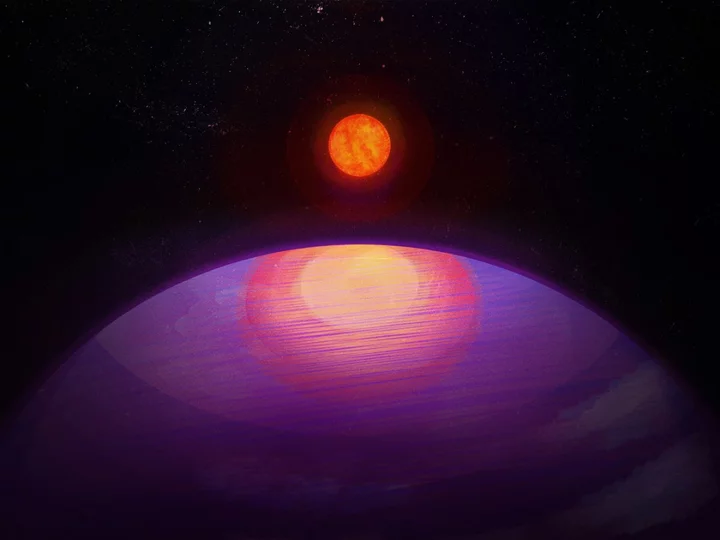Scientists have found a vast planet, so large that it should not exist.
The planet appears to be too big for its sun, and therefore calls into question our understanding of how planets and solar systems form, according to the researchers who found it.
The planet is more than 13 times as massive as Earth. It orbits around a star that is nine times less massive than our Sun.
As such, the ratio between the two of them is 100 times higher than it is between the Earth and our sun.
It is the first time that a planet with such a high mass has been seen orbiting a star with such a low amount of mass. And the discrepancy is so large that scientists thought such a planet could not exist.
“This discovery really drives home the point of just how little we know about the universe,” said Suvrath Mahadevan, from Penn State. “We wouldn’t expect a planet this heavy around such a low-mass star to exist.”
When stars are formed, out of large clouds of gas and dust, that material sticks with the star as a disc that orbits around it. Planets can then form out of that extra material, and go on to make a planetary system like our own.
But science would suggest that the disc around the star in the new paper, known as LHS 3154, would not have enough material to make a planet so large.
“The planet-forming disc around the low-mass star LHS 3154 is not expected to have enough solid mass to make this planet,” Mahadevan said. “But it’s out there, so now we need to reexamine our understanding of how planets and stars form.”
The finding is reported in a new paper, ‘A Neptune-mass exoplanet in close orbit around a very low mass star challenges formation models’, published in Science.
Read MoreAstronomers find unprecedented ‘disc’ around distant planet
Planet too big for its sun ‘is challenging the idea of how solar systems form’
Elon Musk’s SpaceX rockets are punching holes in edge of space









